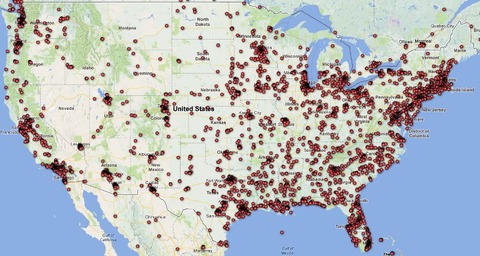Curbing HIV with social media
29 Oct 2014

’Big data’ taken from social media posts could be used reduce the spread of diseases such as HIV, a digital behaviour expert has said.
Utilising information collected from social media posts can provide insights into the likelihood of people engaging in risk behaviours or contracting diseases such as human immunodeficiency virus (HIV), said Sean Young, at the University of California’s Centre for Digital Behaviour.
According to the National AIDS Trust (NAT), roughly 35 million people worldwide had HIV in 2012, while the NHS estimated that nearly 100,000 people in the UK had HIV in 2012.
“These data can be modelled alongside other datasets and used to predict biomedical outcomes
Sean Young, University of California
Young said that “mining” social media will create revolutionary benefits for many areas of medicine in the future, but suggests this type of testing is still in its infancy.
In an article published today in the Cell Press journal Trends in Microbiology, Young said that with the right tools, social media can offer “a rich source of psychological and health-related data generated in an environment in which people are often willing to share freely”.
“Social media, such as Facebook and Twitter, allows users to easily and freely communicate with each other by sharing pictures, short messages, website links, and other multimedia communications,” Young said.
“These data can be modelled alongside other biomedical datasets and used to predict biomedical outcomes.”
In terms of HIV prevention, Young suggests that certain Twitter posts (tweets) have been shown to identify people who are currently or soon to engage in sexual- or drug-related risk behaviours.
According to Young, those tweets can be mapped to particular locations and related to actual HIV trends.
“Social media users are becoming increasingly comfortable publicly sharing many types of information, including personal stories and health information, providing data that can be extracted, categorised as psychological and behavioural data, and used for analysis in health research,” Young said.
Young, alongside a team of computer scientists at the University of California, is working to develop a sophisticated structure capable of handling and effectively categorising health-related social media activity.
Understandably, one of the major concerns of developing such a system is the invasion of privacy.
However, Young claims that people have already begun to accept certain invasive uses of social media information.
“Since people are already getting used to the fact that corporations are doing this, we should at least support public health researchers in using these same methods to try and improve our health and well-being,” Young said.
“We’re already seeing increased support from patients and public health departments.”
Utilising data taken from social media posts is not uncommon, and has been used before to predict disease outbreaks, Young said.
“For example, influenza researchers have used data from Twitter to predict trends in influenza transmission,” he said.
Looking ahead, Young claims that successful social media big data analysis could be used for further analysis.
“Establishing and documenting methods of using social media in big data research is important so that social media data can more broadly impact fields outside public health and the social sciences, such as the basic sciences and genomics, where these approaches have not yet been systematically studied,” Young said.

